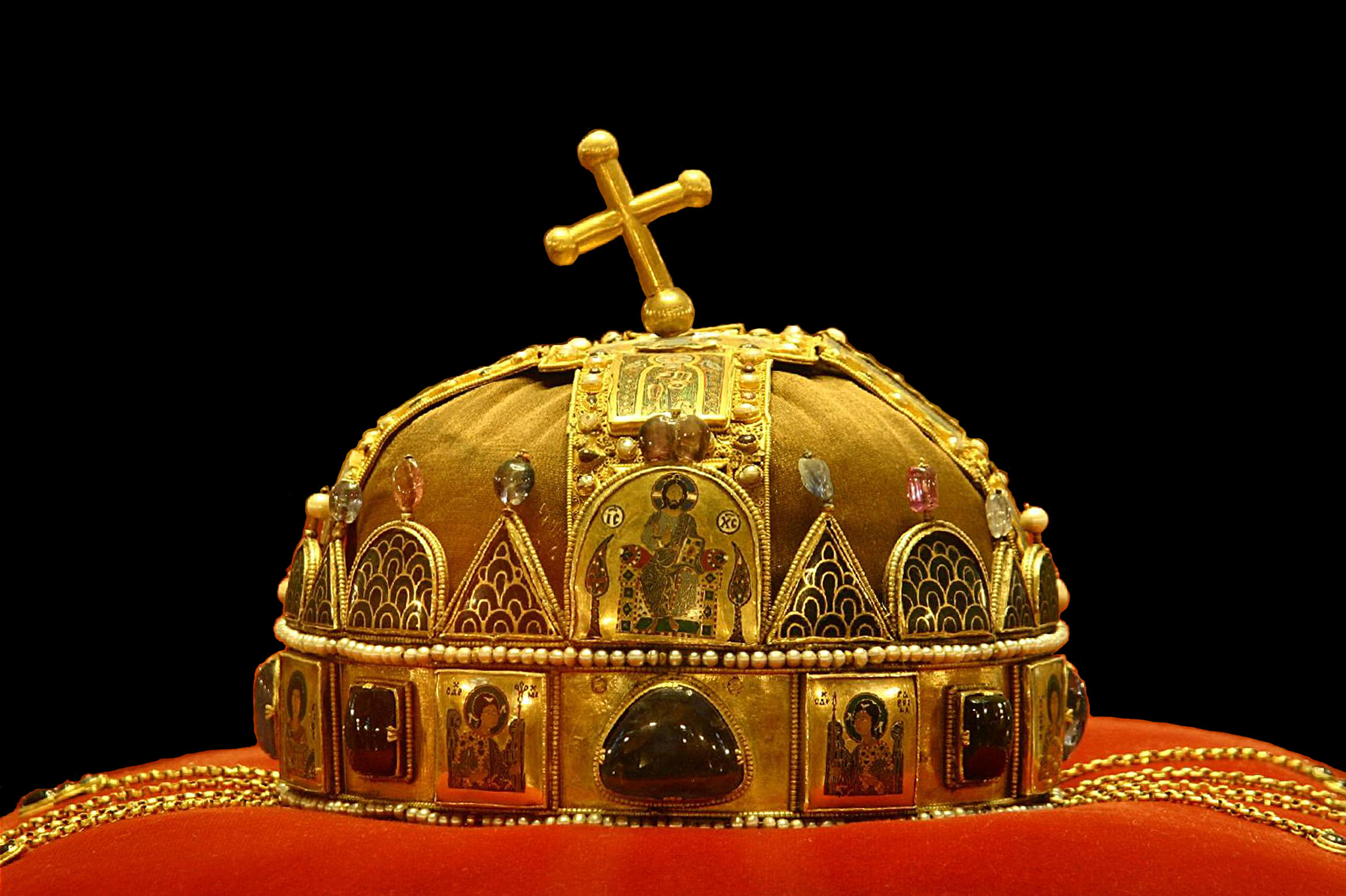|
Porrogszentkirály
Porrogszentkirály (, ) is a village in Somogy County, Hungary where the Somogy Slovenes still live. Etymology According to the local legends Ladislaus I of Hungary came in the area once and a nail fell out of the wheel of his chariot. A cottar noticed it and put his finger in the hole. The king asked him where he lives. But he could not tell him because his village had no name. So the village got the name ''Szentkirály'' (). The scientific explanation states that it was named after the patron of its church, Saint Stephen of Hungary Stephen I, also known as King Saint Stephen ( ; ; ; 975 – 15 August 1038), was the last grand prince of the Hungarians between 997 and 1000 or 1001, and the first king of Hungary from 1000 or 1001 until his death in 1038. The year of his bi ..., the first saint among the Hungarian kings, like Rinyaszentkirály. External links Street map (Hungarian) References Populated places in Somogy County {{Somogy-geo-stub ... [...More Info...] [...Related Items...] OR: [Wikipedia] [Google] [Baidu] |
Somogy County
Somogy (, ; ; , ) is an administrative county (Counties of Hungary, comitatus or ''vármegye'') in present Hungary, and also in the former Kingdom of Hungary. Somogy County lies in south-western Hungary, on the border with Croatia's Koprivnica-Križevci County, Koprivnica-Križevci and Virovitica-Podravina County, Virovitica-Podravina counties. It stretches between the river Dráva and the southern shore of Lake Balaton. It shares borders with the Hungarian counties of Zala County, Zala, Veszprém (county), Veszprém, Fejér, Tolna (county), Tolna, and Baranya (county), Baranya. Somogy is the most sparsely populated county in Hungary. The county capital is Kaposvár. Its area is 6,036 km2. History Somogy was also the name of a historic administrative county (Comitatus (Kingdom of Hungary), comitatus) of the Kingdom of Hungary. Its territory, which was slightly larger than that of present Somogy County, is now in south-western Hungary. The capital of that county was also ... [...More Info...] [...Related Items...] OR: [Wikipedia] [Google] [Baidu] |
Rinyaszentkirály
Rinyaszentkirály () is a village in Somogy county, Hungary Etymology According to the local legends Béla IV of Hungary flew there during the Mongol invasion and later he founded the village. The scientific explanation states that it was named after the patron of its church, Saint Stephen of Hungary like Porrogszentkirály Porrogszentkirály (, ) is a village in Somogy County, Hungary where the Somogy Slovenes still live. Etymology According to the local legends Ladislaus I of Hungary came in the area once and a nail fell out of the wheel of his chariot. A cottar .... History According to ''László Szita'' the settlement was completely Hungarian in the 18th century. External links Street map (Hungarian) References Populated places in Somogy County {{Somogy-geo-stub ... [...More Info...] [...Related Items...] OR: [Wikipedia] [Google] [Baidu] |
Csurgó District
Csurgó () is a district in south-western part of Somogy County, Hungary. '' Csurgó'' is also the name of the town where the district seat is located. The district is in the Southern Transdanubia Statistical Region. Geography Csurgó District borders with Nagykanizsa District ''(Zala County)'' to the north, Marcali District and Nagyatád District to the east, Barcs District to the southeast, the Croatian county of Koprivnica-Križevci to the southwest. The number of the inhabited places in Csurgó District is 18. Municipalities The district has 1 town, 1 large village and 16 villages. (ordered by population, as of 1 January 2013) The bolded municipality is city, ''italics'' municipality is large village. See also *List of cities and towns in Hungary Hungary has 3,152 Municipality, municipalities as of July 15, 2013: 346 towns (Hungarian term: , plural: ; the terminology does not distinguish between city, cities and towns – the term town is used in official transla ... [...More Info...] [...Related Items...] OR: [Wikipedia] [Google] [Baidu] |
László Szászfalvi
László Szászfalvi (born 11 January 1961) is a Hungarian Calvinist pastor, theologian and politician, Member of Parliament for Marcali from 1998 to 2014, then for Barcs Barcs (; ; or ) is a border town in Somogy County, Hungary, and the seat of Barcs District. The Drava River marks the southern boundary of the settlement. Geography Located at the Croatian border and the River Drava, the town is surrounded by ... since 2014. He served as Secretary of State for Churches, Minorities and Civil Affairs between 2010 and 2012. He also served as mayor of Csurgó from 1990 to 2003 and from 2006 to 2010. References 1961 births Living people Hungarian Calvinist and Reformed theologians Hungarian Democratic Forum politicians Fidesz politicians Members of the National Assembly of Hungary (1998–2002) Members of the National Assembly of Hungary (2002–2006) Members of the National Assembly of Hungary (2006–2010) Members of the National Assembly of Hungary (2010–201 ... [...More Info...] [...Related Items...] OR: [Wikipedia] [Google] [Baidu] |
Hungarian Kings
This is a list of Hungarian monarchs; it includes the Grand Prince of the Hungarians, grand princes (895–1000) and the King of Hungary, kings and ruling queens of Hungary (1000–1918). The Principality of Hungary, Hungarian Grand Principality was established around 895, following the 9th-century Hungarian conquest of the Carpathian Basin. The Kingdom of Hungary existed from 1000–1001 with the coronation of King Saint Stephen. The Árpád dynasty, the male-line descendants of Grand Prince Árpád, ruled Hungary continuously from 895 to 1301. Christianity was adopted as the state religion for the Kingdom of Hungary by King Stephen I of Hungary, Saint Stephen and the kings of the Árpád dynasty used the title of the Apostolic Majesty, apostolic king. The descendants of the dynasty gave the world the highest number of saints and blesseds from one family. Therefore, since the 13th century the dynasty has often been referred to as the "Kindred of the Holy Kings". The Árpád dynast ... [...More Info...] [...Related Items...] OR: [Wikipedia] [Google] [Baidu] |

